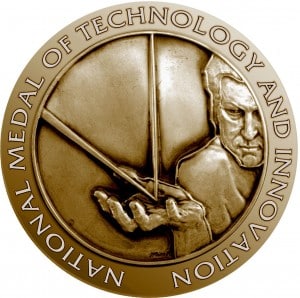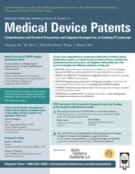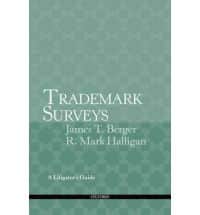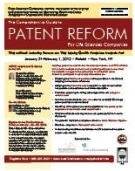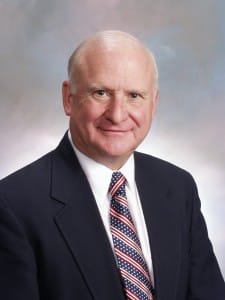A nonprofit cancer research institute has sued biotechnology company Agios and one of its cofounders for more than $1 billion, alleging they took intellectual property developed at the institute and used it to start a for-profit business.
The Leonard and Madlyn Abramson Family Cancer Research Institute, part of the Abramson Cancer Center at the University of Pennsylvania, alleges in the complaint that Dr. Craig B. Thompson and Agios Pharmaceuticals Inc. are developing cancer drugs based on research conducted while Thompson worked at the institute. Thompson is currently the President and Chief Executive Officer of Memorial Sloan-Kettering Cancer Center in New York although Sloan-Kettering is not a party to the suit.

Dr. Thompson later created a for-profit corporation that he concealed from the Institute. After a name change, that entity became the Defendant Agios Pharmaceuticals, Inc. Dr. Thompson did not disclose to the Institute that at least $261 million had been obtained by Agios for what was described as its “innovative cancer metabolism research platform” – i.e., the description of Dr. Thompson’s work at the Institute. Dr. Thompson did not disclose that Agios was going to sell to Celgene Corporation an exclusive option to develop any drugs resulting from the cancer metabolism research platform.
Dr. Thompson joined the Institute in June of 1999 as Scientific Director and his duties included directing, overseeing and managing the Institute’s Cancer Cell Biology Program. Thompson’s work at the Institute included developing a cancer metabolism research platform that would examine the role that metabolic changes play in the origins and progression and death of cancer cells and discovered that cancer cell growth requires an enzyme not previously implicated in cancer.
In 2005, Dr. Thompson acknowledged in a memo to the Institute that: “Over the past six years, the Institute has developed considerable intellectual property.” That memo further noted that: “Drs. Thompson and [other Institute personnel] are exploring the possibility of forming a non-profit development and therapeutics company through which the Institute could capitalize on its intellectual property.”
In 2007, Dr. Thompson reported that his work at the Institute definitely provided evidence that regular or intermittent use of drugs such as metformin could reduce the risk of cancer. He also reported that researchers at the Institute had found that an agent called AICAR had an effect similar to that of metformin in suppressing the growth of breast cancer cells.
The Institute Agreement provides for Institute-Supported Research, as follows:
“All right, title and interest with respect to all technical information, know-how, trade secrets, developments, software, methods, techniques, formulae, data, processes, inventions, discoveries, improvements, and other proprietary ideas and intellectual property (together ‘Intellectual Property’), whether or not patentable or copyrightable, that are conceived, discovered, developed or reduced to practice pursuant to or in the course of Institute Research Programs whose budgets are funded solely by the Institute (‘Institute-Supported Inventions’) will be the sole property of the Institute, subject to the other provisions of this Article 5 and the [Faculty Rights].”
On August 7,2007, Agios was incorporated in Delaware under the then utilized name of Cancer Metabolism Therapeutics, Inc., which Thompson did not disclose to the Institute. Thompson is listed as a director of Agios beginning with its 2007 Annual Report, which was also not disclosed.
In 2009, Agios acknowledged that Thompson was Director of the Abramson Cancer Center at the University of Pennsylvania and that Thompson was one of the three founders of Agios. It also announced the publication in Science of an article co-authored by Dr. Thompson titled “Understanding the Warburg Effect: The Metabolic Requirements of Cell Proliferation.”
In late 2010, Thompson took a one year leave of absence from the Institute, during which he commenced work as the President and Chief Executive Officer of Sloan-Kettering and continued his affiliation with Agios. Dr. Thompson terminated his employment with the Institute and the University on October 31,2011.
As part of the April 15,2010 press release, Agios described itself as “dedicated to the discovery and development of novel therapeutics in the emerging field of cancer metabolism.” Agios further noted that: “The Company’s founders [including Dr. Thompson] and scientific advisors represent the core thought leaders in the field of cancer metabolism responsible for key advances, insights and discoveries in the field.”
An October 2011 reporting noted that “Agios’s scientific co-founders were three of the most renowned pioneers of cancer metabolism,” with one of them being Dr. Thompson. That reporting stated that “Craig Thompson from the University of Pennsylvania” and two others had “discovered that targeting certain metabolic enzymes could fundamentally alter cancer pathways” and took steps “to turn that discovery into a company that could be a ‘prolific discoverer of new products.'”
On November 17,2011, it was publicly reported that Agios received an additional $78 million investment from existing and new funding sources to focus on “inborn errors of metabolism.”
The Institute now believes that Thompson may have conveyed to Agios rights and/or interests related to intellectual property and inventions funded in part or in whole by the Institute, including, but not limited to, the cancer metabolism research platform that formed the focus of Dr. Thompson’s work, that was funded in part or in whole by the Institute.
Accordingly, the Institute claims to have suffered damages in an amount estimated to ultimately exceed $1 billion.
Ultimately, this will come down to facts that can be proven through written documents. You can bet that the Institute will be subpoenaing every written document, email, telephone record and any other bit of digital fingerprint they can find to try to determine what was invented as well as when and where it was invented.
An invention takes two steps, conception and reduction to practice. The trick will be showing who knew what and when did they know it.
Other famous IP Theft cases
A U.S. District Court ordered Nobel Prize winner and former Yale University professor John Fenn, 87, to pay Yale $545,000 in royalties and penalties, and pay their legal bills of almost $500,000 calling Fenn’s actions “fraud” and “civil theft” when he licensed the rights to U.S. Patent No. 5,130,538 to a company he partly owned.
In one of the few cases where the inventor went to jail, Petr Taborsky, a former student at the University of South Florida, went to jail as a result of a dispute over technology ownership. In that case, Taborsky worked as undergraduate lab assistant on a sponsored research project and discovered a potential way to make kitty litter useful in cleaning human waste water. He was convicted of grand theft and theft of trade secrets and sentenced to probation.

